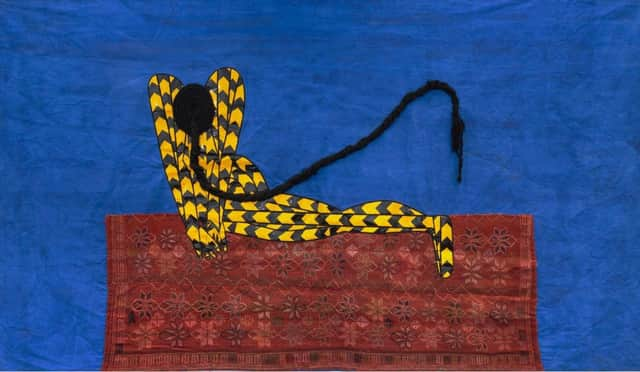Final few weeks for Osman Yousefzada exhibition at Charleston in Firle


Nathaniel Hepburn, director at Charleston, said: “Yousefzada’s work engages with the representation, rupture and reimagining of the migration experience. The British-born South Asian artist works across textiles, sculpture, moving image, installation, garment making and performance. A gifted storyteller, Yousefzada’s work merges autobiography with fiction and ritual.
“Key works presented at Charleston will include a new series of large-scale textiles titled Queer Feet. The textile compositions feature painted canvases and collaged barricade tape, Afghan, Balouch and Turkish rugs found in Pakistan, as well as found materials that are reminiscent of the embroidery the artist’s mother, a talented maker, would stitch onto table cloths. They are overlaid with depictions of male figures found in 1950s physique magazines, rendered in the distinctive black and yellow hazard tape, representing defiant queer bodies. The exhibition will also feature a new series of studies on paper created by Yousefzada during a recent residency at the Birmingham School of Art. The selection of prints are made up of different media and are partly inspired by characters in the Falnama, a book of omens used by fortune tellers in Iran, India and Turkey during the 16th and 17th centuries. People seeking insight into the future would turn to a page of the Falnama at random and interpret the text and colourful drawings to predict their future. Depicting powerful intersex guardians, Yousefzada creates these works as talismans or magical objects that protect or heal and act as guides through the immigrant experience.” Osman said: “The exhibition opens a window beyond the idyllic surroundings of Charleston into its subversive and queer systems. By interrogating the notion of home through a lens of class, race, queerness and representation, new conversations and ideas begin to emerge. Working with Charleston on these new commissions has given me an opportunity to interrogate the power and security that comes from domestic spaces.”